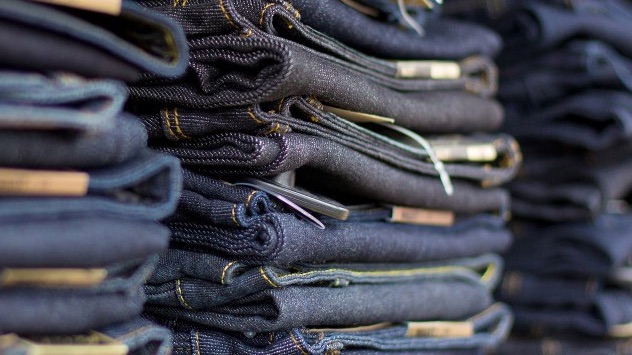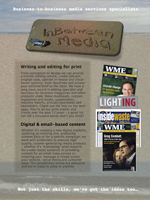 A Sydney-based group has just released a report based on a business roundtable held recently in Sydney, where leaders from business, consulting, retail, logistics and not-for-profit sectors discussed the opportunity to develop circular economy principles and practices in the denim industry in Australia.The roundtable discussion was an important first step in bringing together relevant parties, encouraging open discussion and sharing of information, and initiating connections that will continue to evolve.
A Sydney-based group has just released a report based on a business roundtable held recently in Sydney, where leaders from business, consulting, retail, logistics and not-for-profit sectors discussed the opportunity to develop circular economy principles and practices in the denim industry in Australia.The roundtable discussion was an important first step in bringing together relevant parties, encouraging open discussion and sharing of information, and initiating connections that will continue to evolve.
While we don’t know exactly how many jeans are disposed of each year in Australia, from the tonnages received by charitable recyclers we know that it is significant in terms of valuable raw materials being removed from the productive economy.
According to the latest figures, up to 40% of the 300,000 tonnes in donations of clothing and household items to charitable recyclers annually ends up being deposited in landfill. One national charitable recycler reports that 75-80% of the jeans they receive are either sent to landfill or exported depending on the condition in which they arrive.
These figures do not include the clothing that Australian households are already disposing of directly to landfill through kerbside collections.
A global movement using the principles and practices of the Circular Economy (CE) is beginning to stimulate changes in consumer behaviour and reduce the environmental and social impacts of the denim industry globally.
The CE goes beyond recycling as it is based around a restorative industrial system geared towards designing out waste. The goal is not just to design for better end-of-life recovery but to also minimise energy use and environmental impacts.
A company that exemplifies this approach, MUD Jeans, offers an ethical consumption model for customers and realises the value for denim beyond the ‘wear’ phase. Established in Europe in 2012, this truly ‘Circular Denim Brand’ is currently leasing around 15,000 pairs of jeans across various markets, hoping to reach a target of 100,000.
With it’s customer-base primarily in Holland, MUD Jeans has demonstrated that with a population roughly comparable with Australia, in a market that sells around 20 million pairs of jeans overall each year, a circular business model can work effectively.
However, factors related to the market, policy settings and geography mean that CE approaches need to be designed specifically for the markets in which they operate. To discuss the barriers and opportunities for applying CE principles and practices to the denim industry in Australia, MUD Jeans lent its insight and expertise to the recent business roundtable in Sydney.
Held on 26 September 2016, the business roundtable covered the following areas of discussion and enquiry:
. How the denim industry currently operates in Australia and the problems/challenges that it faces;
. How successful CE approaches to denim operate and where they are working globally;
. How CE principles and practices might be applied to the denim industry in Australia – the barriers, the opportunities and the levers for change.
When considering the denim industry from a systems level, the roundtable participants identified that there were problems being faced by denim makers, retailers and consumers but they were largely ‘hidden’ by market dynamics, business resistance to change and policy silence in relation to textiles waste. These include growth in consumption outpacing end-of-life solutions for denim; problems associated with waste; volatility in markets for labour and resources including energy, water and raw materials; and stakeholder expectations towards more circular/sustainable practices.
However, businesses are beginning to see opportunities in developing more circular/sustainable practices when it comes to apparel. This is demonstrated by discussions taking place between industry, governments and the charitable sector; and was evidenced by a number of case studies from overseas where apparel and denim specifically have been subject to successful take-back/repurposing/recycling programs.
When it came to envisioning a CE approach to denim in Australia, it was clear that are many different angles from which this can be approached, including:
. waste/material streams – the waste textile stream and end-of-pipe solutions ie. addressing the immediate need for solutions to waste accumulation of textiles;
. product design & stewardship – new products being created and/or entering the market – designing, making and retailing these products in consideration of their full life cycle;
. industry conditions – creating the right kind of market/policy environment for a successful circular textiles industry in Australia with recycling capability;
. business action – leadership within business to set their own benchmarks for performance, influence and change consumer behaviour and supplier practices;
. infrastructure investment – the kinds of infrastructure, skills and equipment required to make circular denim model work and the economics around it;
. product development – developing markets for specific products that are made from recycled denim/ textiles, whether re-manufactured in Australia or offshore;
. engagement – how communities and consumers can frame and influence the development of a circular textiles industry in Australia – for example, take-back schemes.
Discussion between participants revealed that many of the skills, the knowledge and experience to develop CE approaches already exists in Australia. But there was more work to be done in understanding the viability of establishing a textile recycling and manufacturing process here.
Through bringing MUD Jeans to Australia, to engage with key stakeholders interested in developing CE principles and practices in denim in Australia, the Better Threads project has contributed to critical thinking and development.
For a copy of the report click here.


Comments are closed.